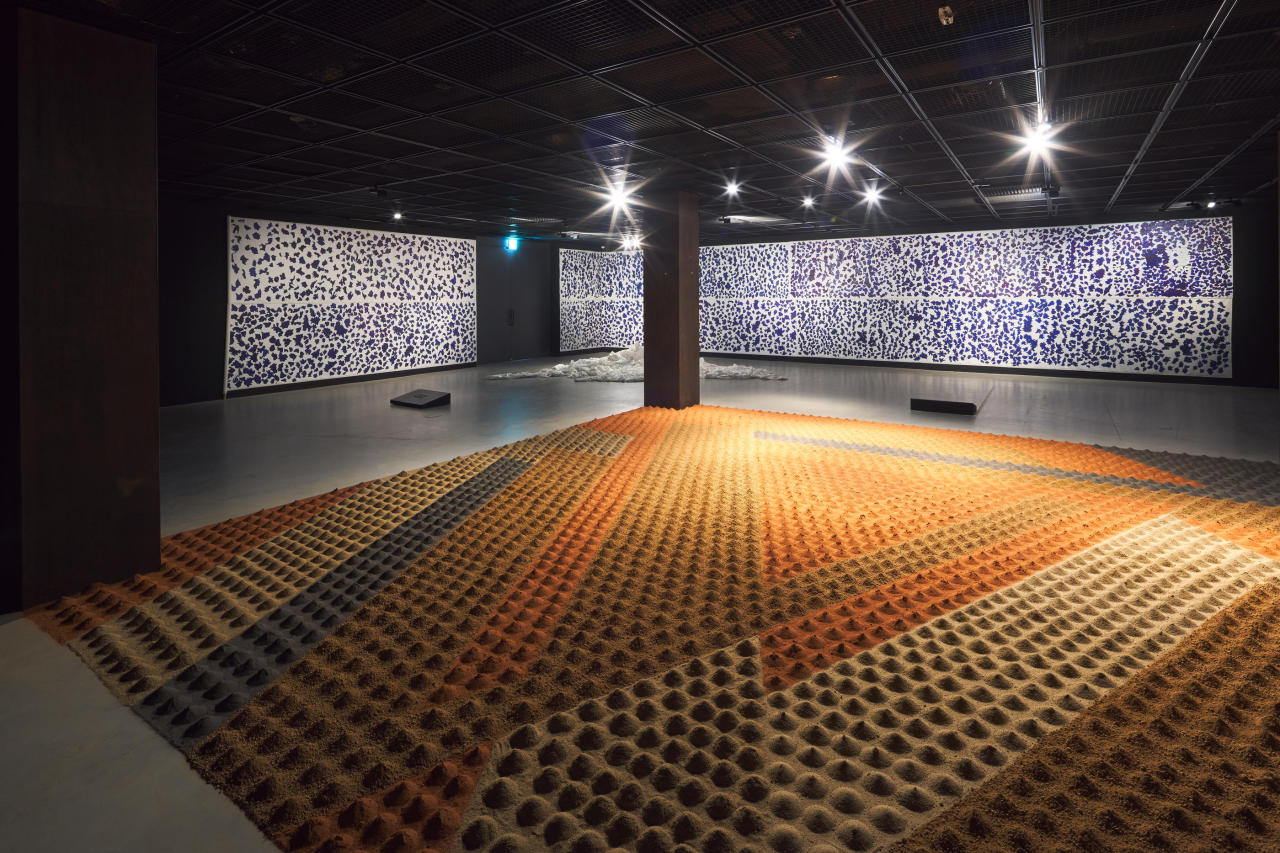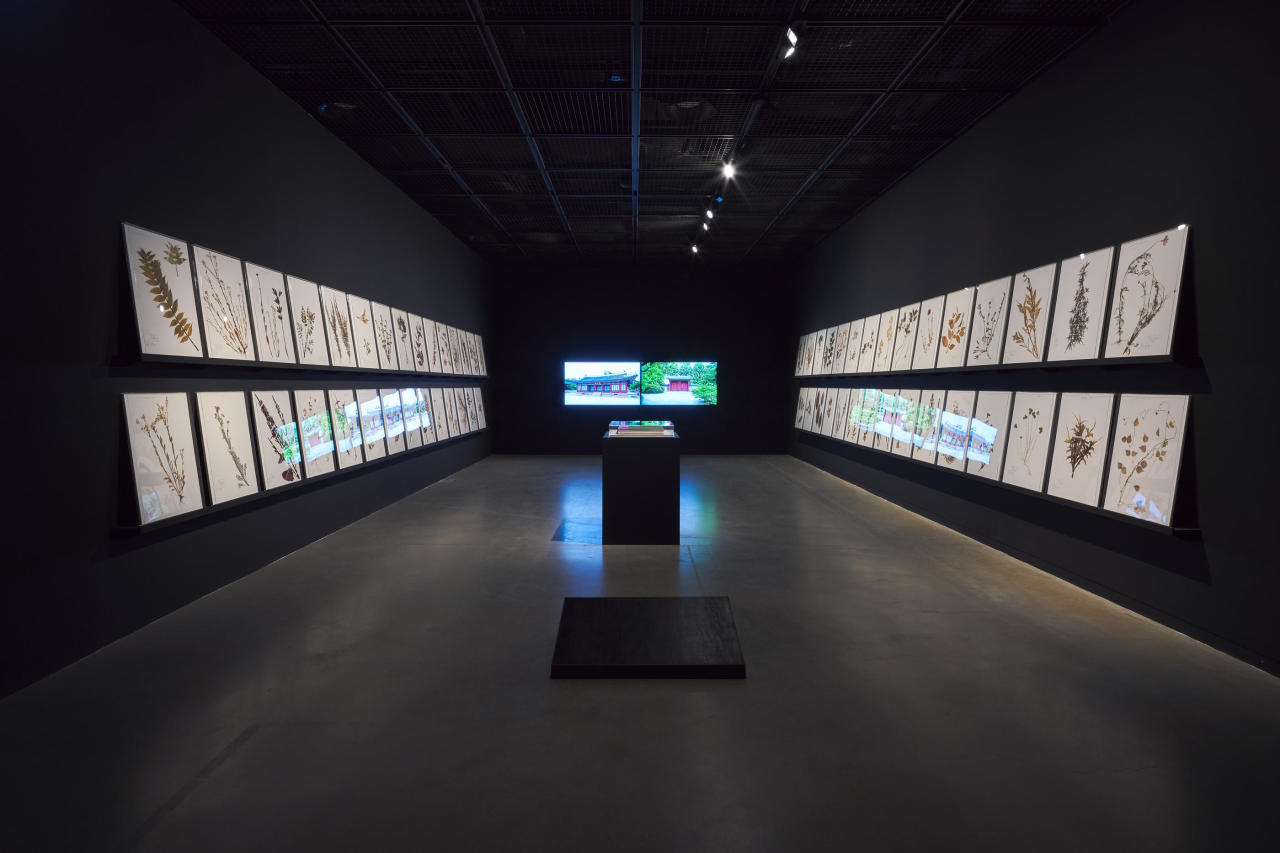Exhibition highlights King Jeongjo and his legacy
By Shim Woo-hyunPublished : Aug. 12, 2019 - 17:52
King Jeongjo (1752-1800), the 22nd king of the Joseon era, is one of the most respected rulers of the period, known for his love for the people and innovations he tried to bring to the kingdom.
Jeongjo recruited many scholars who pursued pragmatic measures, such Jeong Yak-yong, and established Kyujanggak, a royal library. Hwaseong, a UNESCO World Heritage Site, was also one of King Jeongjo’s celebrated achievements.
The latest exhibition at the Suwon Ipark Museum of Art, titled “Seong Fantastic City,” is dedicated to the king and Hwaseong, a fortress that surrounds the central Suwon.
Ten local artists are participating in the exhibition: Kim Kyoung-tae, Kim Do-hee, Kim Sung-bae, Na Hyun, Min Joung-ki, Park Geun-yong, Suh Yong-sun, Ahn Sung-soo, Lee Lee-nam and Choi Sun.
Jeongjo recruited many scholars who pursued pragmatic measures, such Jeong Yak-yong, and established Kyujanggak, a royal library. Hwaseong, a UNESCO World Heritage Site, was also one of King Jeongjo’s celebrated achievements.
The latest exhibition at the Suwon Ipark Museum of Art, titled “Seong Fantastic City,” is dedicated to the king and Hwaseong, a fortress that surrounds the central Suwon.
Ten local artists are participating in the exhibition: Kim Kyoung-tae, Kim Do-hee, Kim Sung-bae, Na Hyun, Min Joung-ki, Park Geun-yong, Suh Yong-sun, Ahn Sung-soo, Lee Lee-nam and Choi Sun.

Kim Do-hee has focused on the personal history of the king.
Jeongjo was the son of Crown Prince Sado, who was locked inside a wooden chest and left to die by his father, King Yeongjo.
Sado was never properly buried, and Jeongjo was prohibited by his grandfather, Yeongjo, from visiting Sado’s burial site. It was 12 years after Sado’s death when Jeongjo was finally able to visit his ill-fated father’s grave.
Finding a proper burial site was an important task for Jeongjo, known for his filial piety.
Jeongjo moved Sado’s burial place to a carefully chosen spot in Suwon. He also built a city near the burial site and Hwaseong, the new city’s fortification.
Kim’s work “Yungneung for All People” is the artist’s take on the tomb that Jeongjo dedicated to his father.
In her installation works, Kim has taken an image of the burial mound, using it to create many small mounds to represent the public, who Jeongjo tried to govern with affection.
Kim used soil she collected from different parts of the country, such as Gochang in North Jeolla province, the Nakdong River area and Boryeong, South Chungcheong Province, to make small burial mounds that represent the public.
“I am quite certain that Jeongjo also learnt that all are equal in death. He would have not cared so much about the common people who built the fortress otherwise,” Kim said.
Choi Sun also focused on how Jeongjo treated the commoners.
“One of the things that impressed me about Jeongjo and Hwaseong was that he tried to make a city where everyone is well-off and happy. There was the political ideal he tried to achieve in building this city,” Choi said.
In the exhibition, Choi introduces a large-sized painting made with individuals he met on the streets. Choi asked them to blow blue ink on paper with their breath, which resulted in hundreds of butterfly-shaped chunks of blue ink spread on white canvases.
“I want people who see my painting to think about how valuable they are, as well as how valuable their neighbors are,” Choi said.

Meanwhile, Na Hyun looked into Jeongjo’s unprecedented use of a foreign technique from the West when building the fortress.
“When we talk about Hwaseong, we have to talk about Geojunggi invented by Jeong Yak-Yong,” Na said.
Jeong made Geojunggi, a pulley used to lift heavy stones during the construction of the fortress, greatly reducing the construction time.
“The invention was originally based on a book that Crown Prince Sohyeon had brought from the Qing Dynasty -- about 100 years prior to Jeongjo’s era. The book was later discovered by King Jeongjo and given to Jeong Yak-Yong,” Na explained.
“The Illustrations and Explanations of the Wonderful Machines of the Far West” was originally written by Johann Schreck. The book, which included illustrations and description of machines, was the first of its kind published in China.
“Many people still often think that we are one ethnic family speaking one language. But in reality, we are living together with people from different ethnic backgrounds,” Na said.
“It is also similar with Hwaseong. The fortress boasts its traditional aesthetics. But, at the same time, they are built with the help of technology originally from the West. In a way, we have been always communicating with the outside world,” Na said.
In the exhibition, Na introduces a collection of plant samples, originally from foreign countries but which now grow in the natural environment here.
It is a metaphor for other forms of communications that people have been making, the artist explained.
The exhibition runs through Nov. 3.
By Shim Woo-hyun(ws@heraldcorp.com






![[KH Explains] How should Korea adjust its trade defenses against Chinese EVs?](http://res.heraldm.com/phpwas/restmb_idxmake.php?idx=644&simg=/content/image/2024/04/15/20240415050562_0.jpg&u=20240415144419)












![[Today’s K-pop] Stray Kids to return soon: report](http://res.heraldm.com/phpwas/restmb_idxmake.php?idx=642&simg=/content/image/2024/04/16/20240416050713_0.jpg&u=)